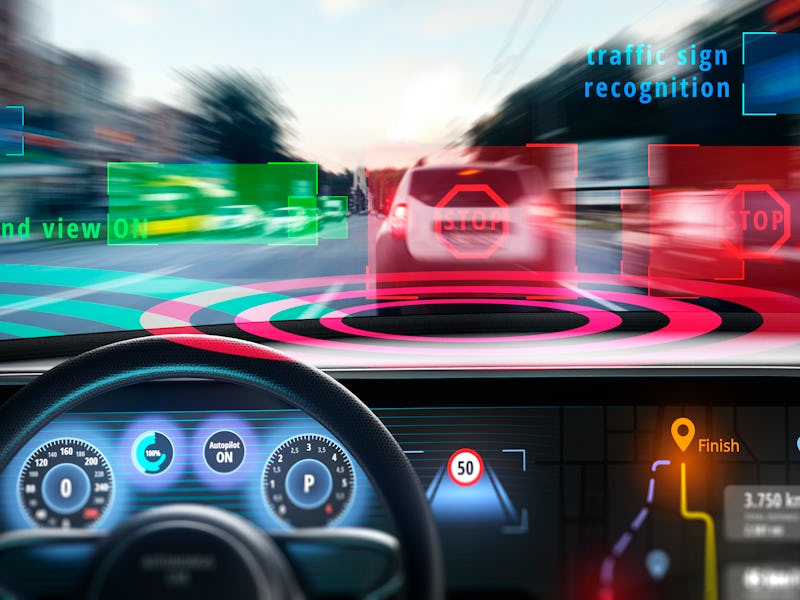If you hope to see a self-driving car this decade, keep dreaming
The technology has improved over time. But driving alongside humans is too damn complicated.

The autonomous car is on the march, but it will probably remain out of the realm of regular people for a while.
A self-driving car could offer a multitude of benefits for society. People otherwise unable to drive a car could complete difficult journeys, longer road trips could replace flying by sleeping overnight, and taking the human out of the equation could fight against accidents caused by tiredness. A July 2017 report, from American personal injury law firm Cooney and Conway, found the technology could stop around 90 percent of accidents and save around 300,000 lives per decade.
But after a decade of hype, the autonomous car seems as far away as ever. Despite some small-scale tests, the dream of a go-anywhere car seems unlikely any time soon. Inverse predicts that automakers won’t reach the holy grail of a fully self-driving car in the 2020s, but they will take to the streets in limited scenarios.
This is #11 on Inverse’s 20 predictions for the 2020s.
The self-driving car: decline of a dream
Perhaps one of the most famous marks of hubris came from Elon Musk, who claimed in October 2016 that Tesla’s vehicles would complete a coast-to-coast autonomous drive in 2017. By October 2018, Musk had admitted that it’s “extremely difficult to achieve a general solution for self-driving that works well everywhere.”
That’s not to say the industry hasn’t advanced. Tesla does offer the semi-autonomous Autopilot system, which uses that same suite of cameras intended for full autonomy to drive the car along highways and turn off at the correct exit. The modern cars can also park themselves. The main issue is the driver needs to oversee the car’s movements and step in before it causes any problems.
Then there’s Waymo, the company that started life as Google’s self-driving car project. The company has been ferrying passengers around Phoenix in Arizona, using its trial autonomous car service. Waymo announced in October 2018 that it would start removing the safety engineer from the driver’s seat. This driverless zone covers around 50 square miles, half the area serviced by the cars with a safety driver.
It’s in these small-geo-fenced areas where autonomous driving might take its first steps into the world. We’ve seen it before with the Las Vegas shuttle bus that moves passengers along a pre-defined strip, unveiled in February 2018. This level of autonomy, known as “level four,” could grow more popular as automakers focus on getting it right in a short area.
It’s not quite the pedal-free experience envisioned by the likes of Ford, but it’s a step.
As 2019 draws to a close, Inverse is looking to the future. These are our 20 predictions for science and technology for the 2020s. Some are terrifying, some are fascinating, and others we can barely wait for. This has been #12. Read a related story here.